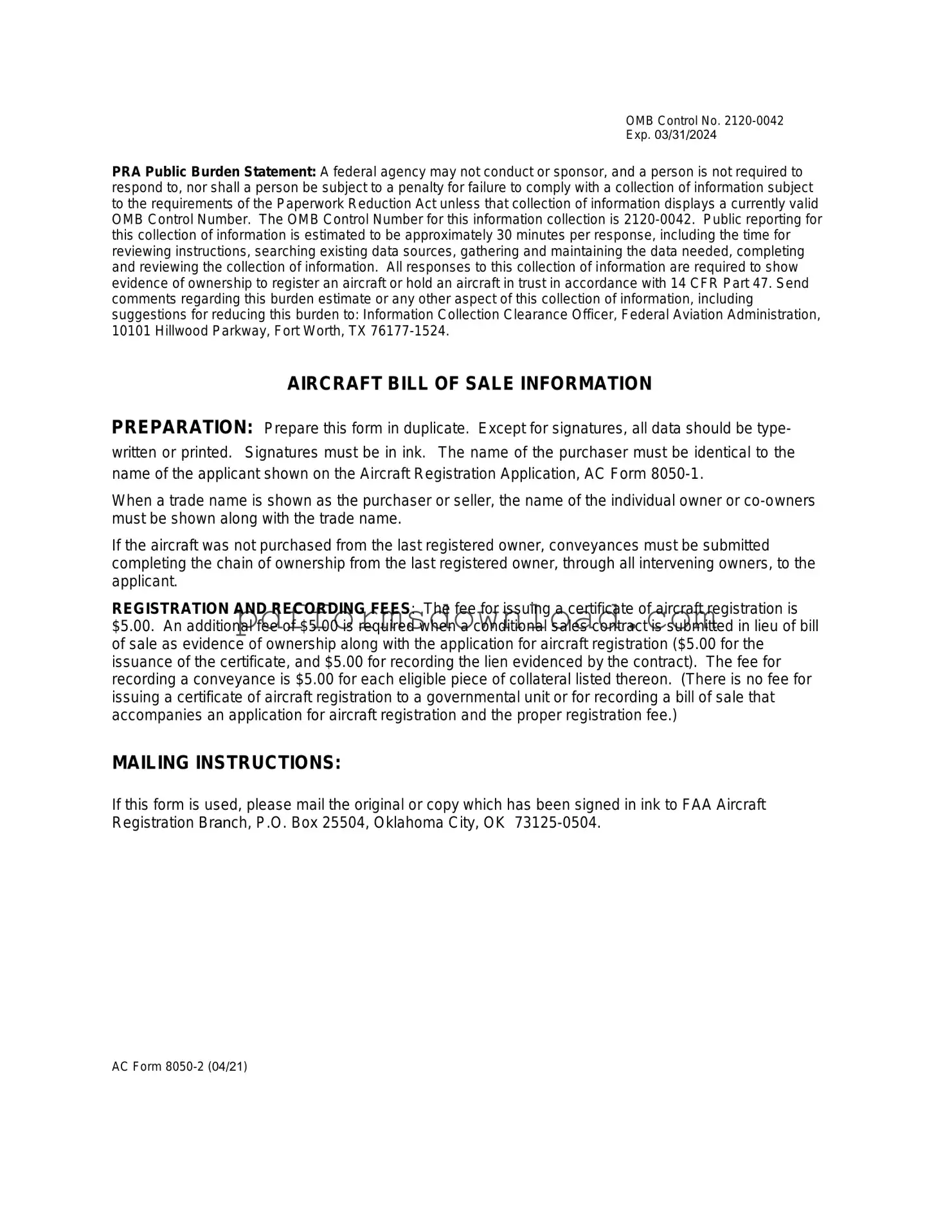What is the Aircraft Bill of Sale AC 8050-2 form?
The Aircraft Bill of Sale AC 8050-2 form is a legal document used to transfer ownership of an aircraft from one party to another. This form is essential for ensuring that the transaction is recognized by the Federal Aviation Administration (FAA). By completing this form, the seller confirms that they are the rightful owner and have the authority to sell the aircraft.
Who needs to complete the Aircraft Bill of Sale AC 8050-2 form?
Both the buyer and the seller must complete the Aircraft Bill of Sale AC 8050-2 form during a sale. The seller provides information about the aircraft and confirms the sale, while the buyer needs to ensure that they are acquiring the aircraft legally. It is crucial for both parties to understand the details included in the form.
Where can I obtain the Aircraft Bill of Sale AC 8050-2 form?
You can obtain the Aircraft Bill of Sale AC 8050-2 form directly from the FAA’s website or through various aviation-related organizations. It is available for free and can be printed out for completion. Make sure you have the most current version of the form to avoid any issues during the transaction.
What information is required on the Aircraft Bill of Sale AC 8050-2 form?
The form requires several key pieces of information, including the names and addresses of both the buyer and seller, the aircraft's make, model, and serial number, and the date of the sale. Additionally, the purchase price must be included. Accurate information is crucial for the validity of the sale.
Is the Aircraft Bill of Sale AC 8050-2 form legally binding?
Yes, the Aircraft Bill of Sale AC 8050-2 form is a legally binding document once it is signed by both parties. It serves as proof of the transfer of ownership and can be used in legal situations if disputes arise. Proper completion and signing are necessary for it to hold up in court.
Do I need to have the form notarized?
No, the Aircraft Bill of Sale AC 8050-2 form does not need to be notarized to be valid. However, having it notarized can add an extra layer of authenticity and help protect both parties in case of future disputes. It is often recommended, especially for high-value transactions.
What should I do after completing the Aircraft Bill of Sale AC 8050-2 form?
Once the form is completed and signed, both the buyer and seller should keep a copy for their records. The seller should also submit the original form to the FAA to officially record the change of ownership. This step is crucial for ensuring that the new owner is recognized in the FAA's records.
Can I use the Aircraft Bill of Sale AC 8050-2 form for all types of aircraft?
The Aircraft Bill of Sale AC 8050-2 form is specifically designed for the sale of aircraft that are registered with the FAA. It can be used for various types of aircraft, including airplanes and helicopters, as long as they are registered. For unregistered aircraft, a different process may be necessary.
